Abstract
A major schism in modern scientific psychology has occurred between behavior analysts and cognitive psychologists. The two groups speak in different languages, but the languages can be translated so that they are mutually understandable; when either language is translated into the other, similarities emerge from seeming differences. We draw an analogy between the basic units of behavior analysis (the operant and the establishing operation) and cognitive psychology (the production). We argue that both units describe behavior as a function of motivative and discriminative antecedents. In addition, the two perspectives account in analogous ways for ongoing changes in motivation and for control by verbal statements. Adherents of the two perspectives have experimentally analyzed some of the same problems and fashioned similar solutions for applied problems. We conclude that many of the commonly cited differences between the two perspectives are the result of misunderstanding, and that the real differences need not preclude communication and collaboration. The schism can be bridged.
Keywords: behavior analysis, behaviorism, cognitive psychology
Full text
PDF
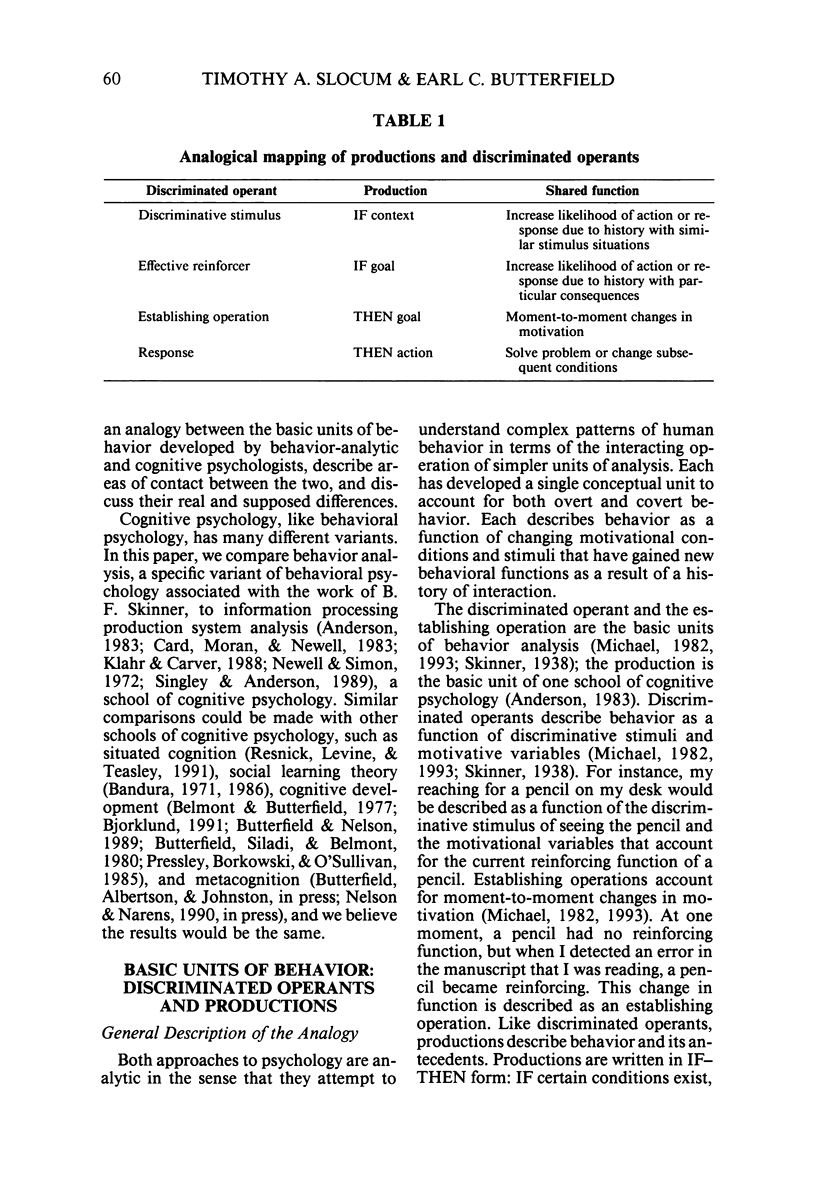


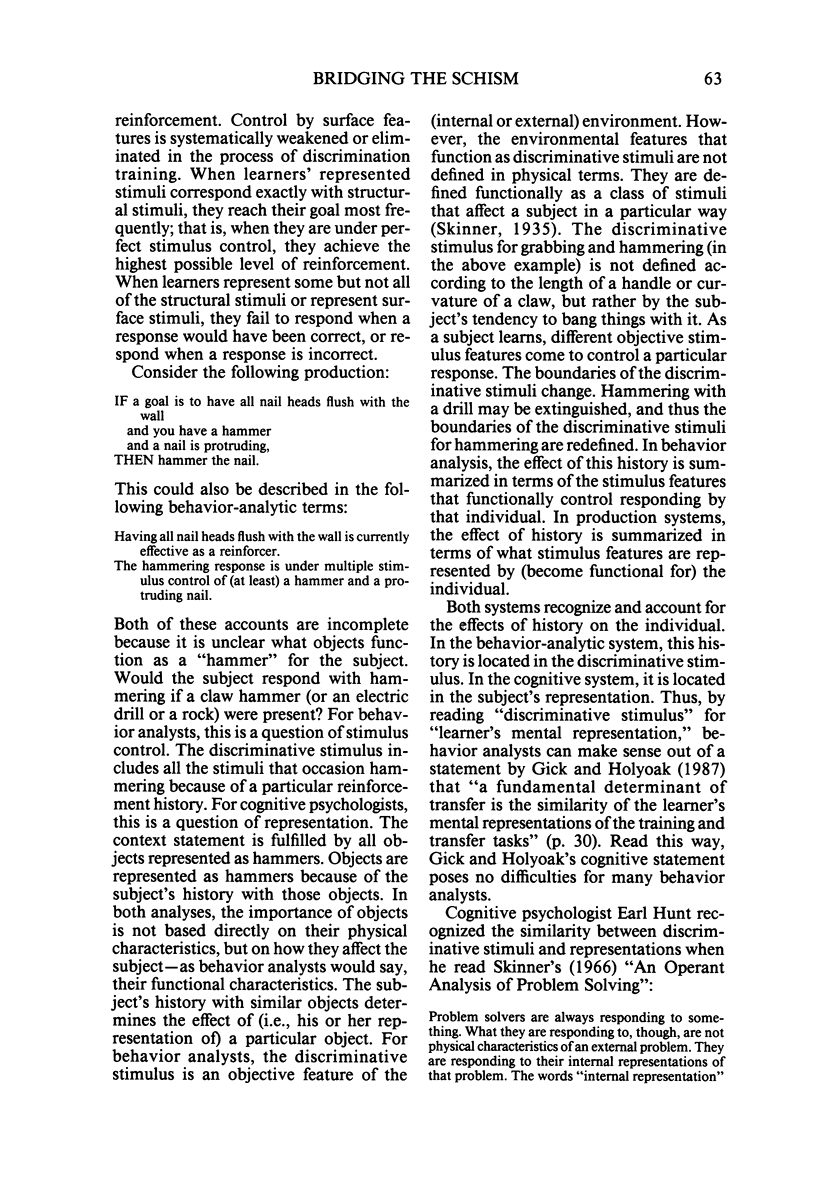

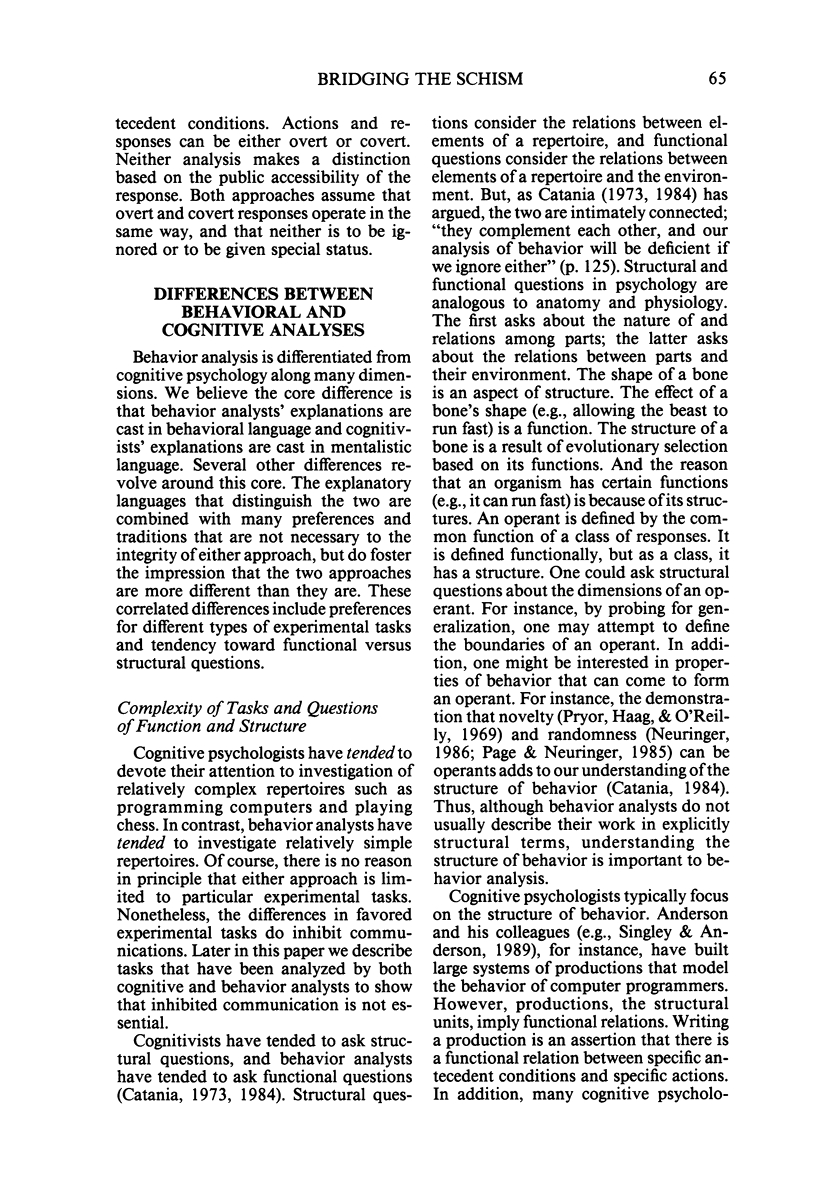

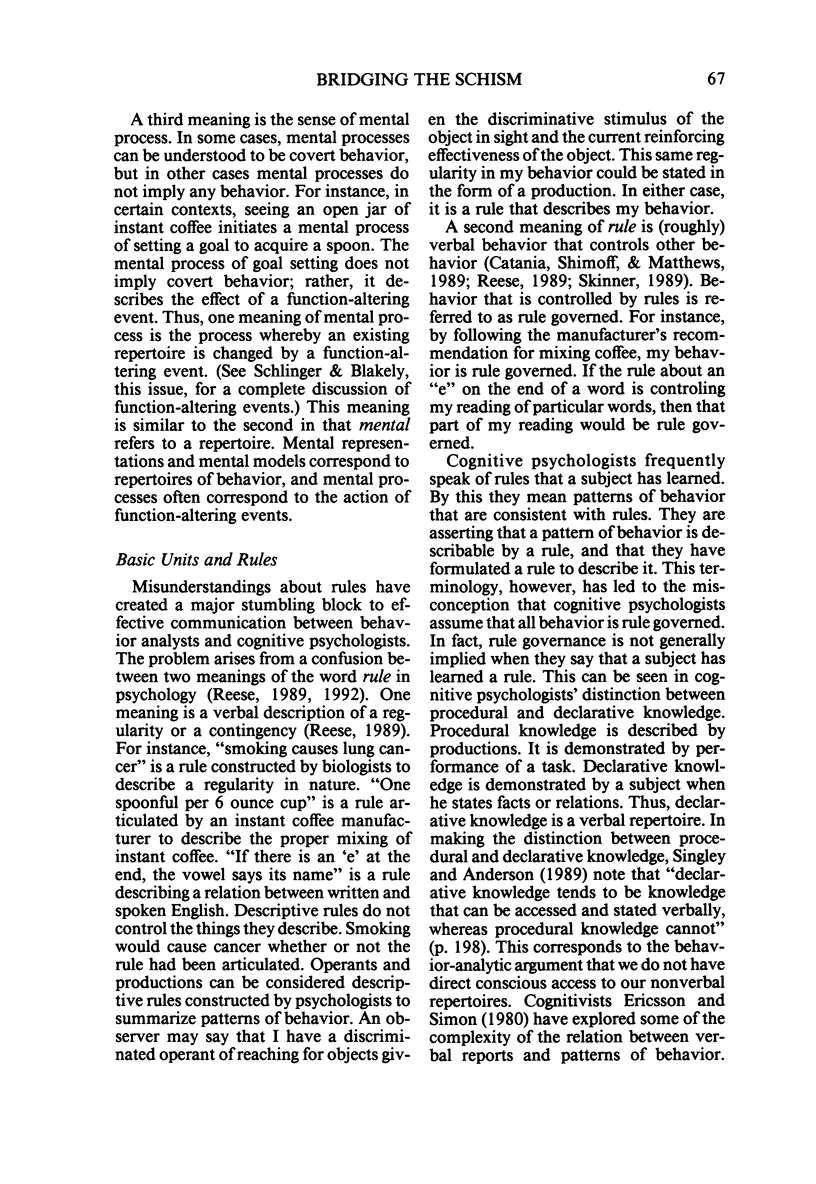
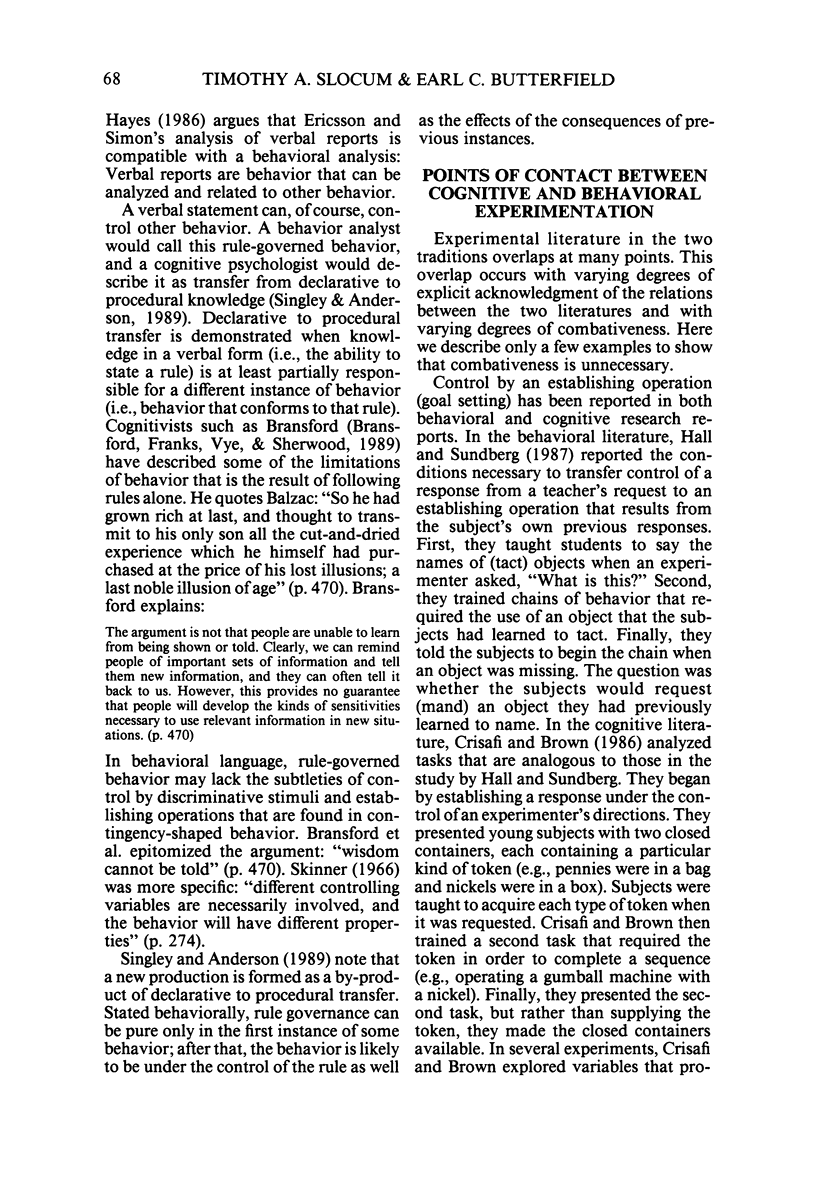
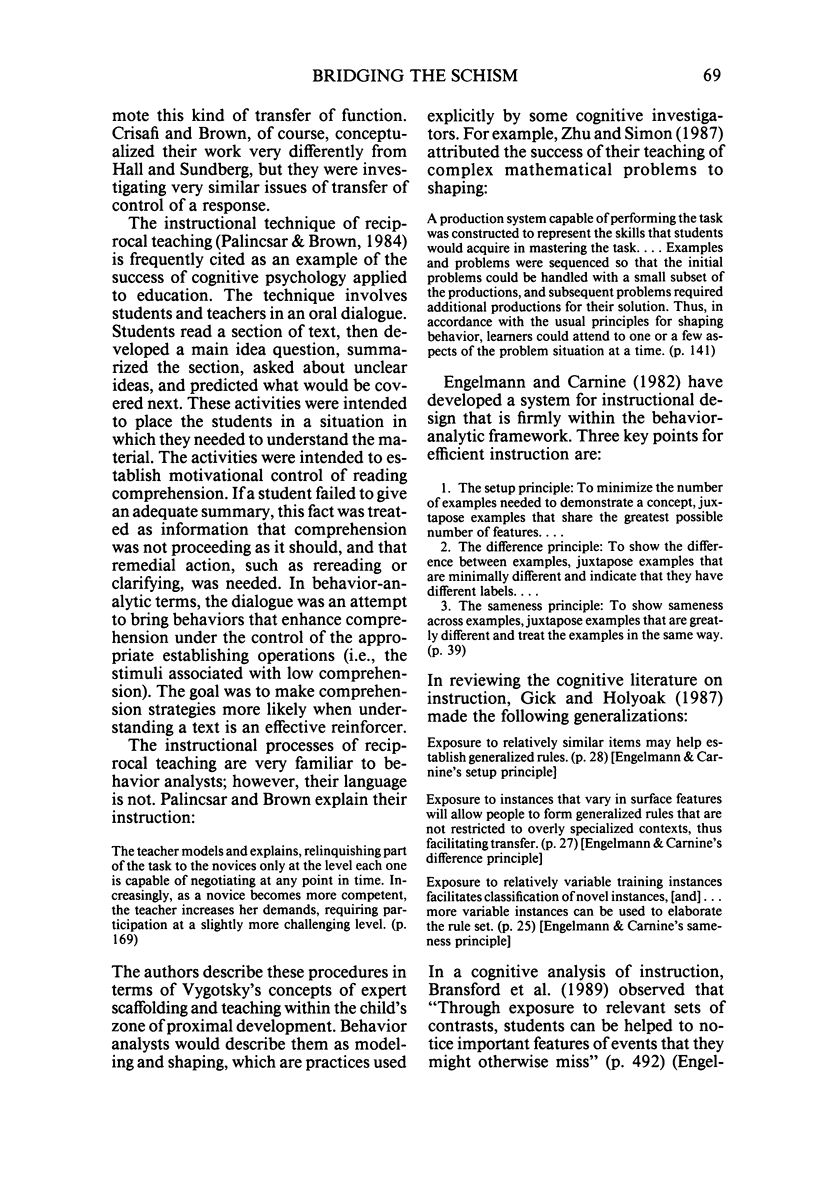
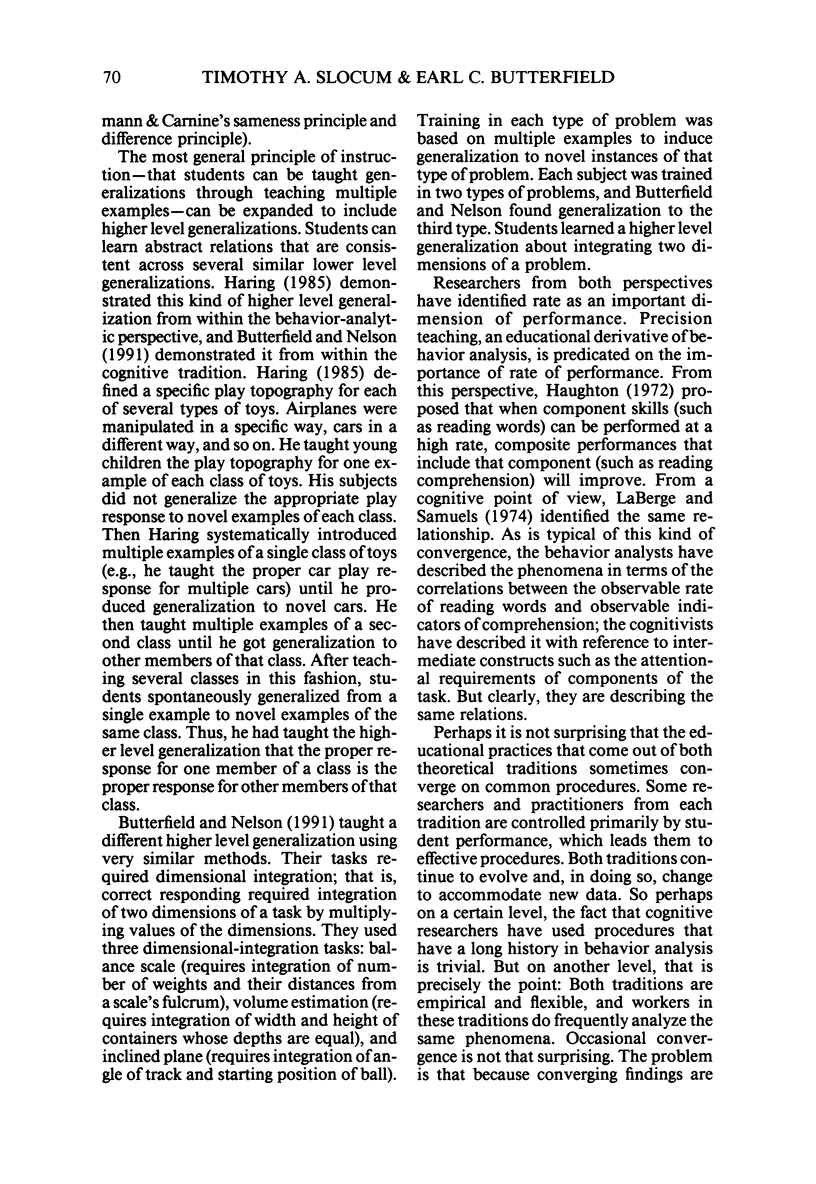
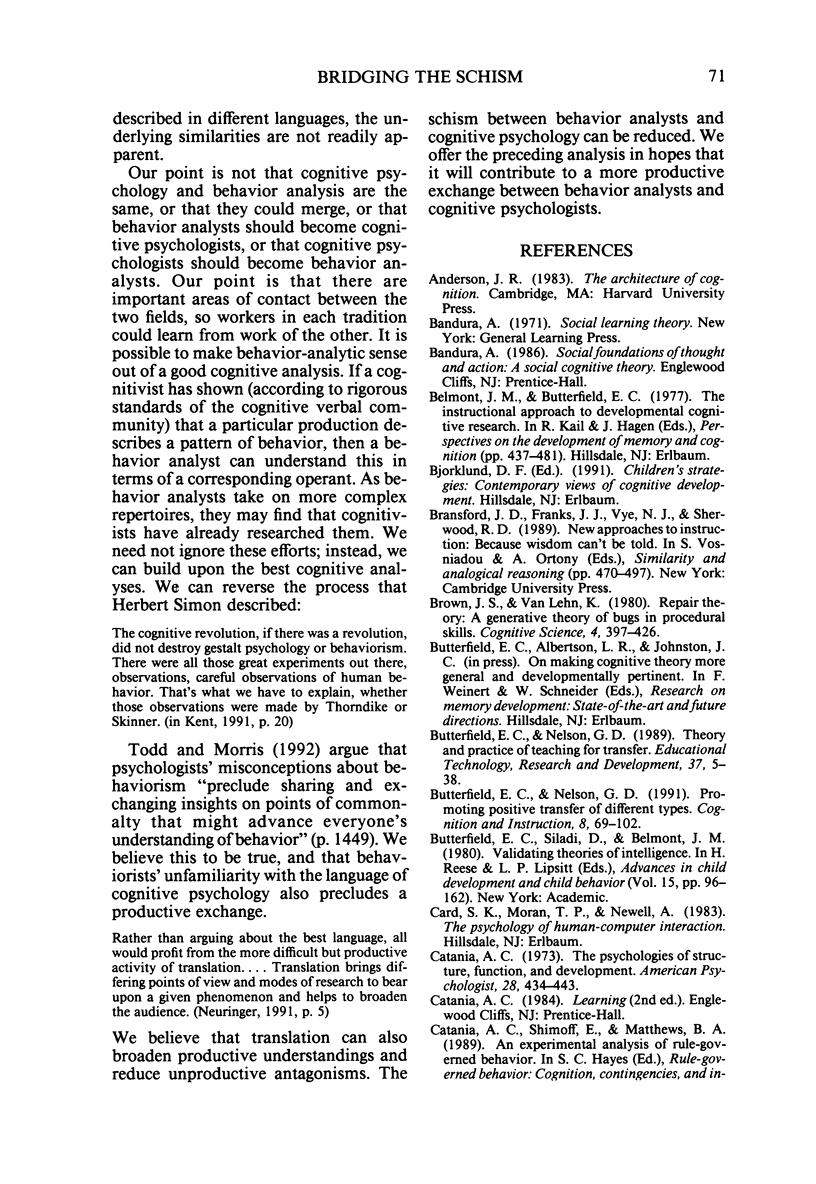


Selected References
These references are in PubMed. This may not be the complete list of references from this article.
- Butterfield E. C., Siladi D., Belmont J. M. Validating theories of intelligence. Adv Child Dev Behav. 1980;15:95–162. doi: 10.1016/s0065-2407(08)60126-3. [DOI] [PubMed] [Google Scholar]
- Crisafi M. A., Brown A. L. Analogical transfer in very young children: combining two separately learned solutions to reach a goal. Child Dev. 1986 Aug;57(4):953–968. [PubMed] [Google Scholar]
- Haring T. G. Teaching between-class generalization of toy play behavior to handicapped children. J Appl Behav Anal. 1985 Summer;18(2):127–139. doi: 10.1901/jaba.1985.18-127. [DOI] [PMC free article] [PubMed] [Google Scholar]
- Michael J. Distinguishing between discriminative and motivational functions of stimuli. J Exp Anal Behav. 1982 Jan;37(1):149–155. doi: 10.1901/jeab.1982.37-149. [DOI] [PMC free article] [PubMed] [Google Scholar]
- Michael J. Establishing operations. Behav Anal. 1993 Fall;16(2):191–206. doi: 10.1007/BF03392623. [DOI] [PMC free article] [PubMed] [Google Scholar]
- Neuringer A. Humble behaviorism. Behav Anal. 1991 Spring;14(1):1–13. doi: 10.1007/BF03392543. [DOI] [PMC free article] [PubMed] [Google Scholar]
- doi: 10.1901/jeab.1986.45-351. [DOI] [PMC free article] [Google Scholar]
- Pryor K. W., Haag R., O'reilly J. The creative porpoise: training for novel behavior. J Exp Anal Behav. 1969 Jul;12(4):653–661. doi: 10.1901/jeab.1969.12-653. [DOI] [PMC free article] [PubMed] [Google Scholar]
- Stokes T. F., Baer D. M. An implicit technology of generalization. J Appl Behav Anal. 1977 Summer;10(2):349–367. doi: 10.1901/jaba.1977.10-349. [DOI] [PMC free article] [PubMed] [Google Scholar]
- Todd J. T., Morris E. K. Case histories in the great power of steady misrepresentation. Am Psychol. 1992 Nov;47(11):1441–1453. doi: 10.1037//0003-066x.47.11.1441. [DOI] [PubMed] [Google Scholar]


